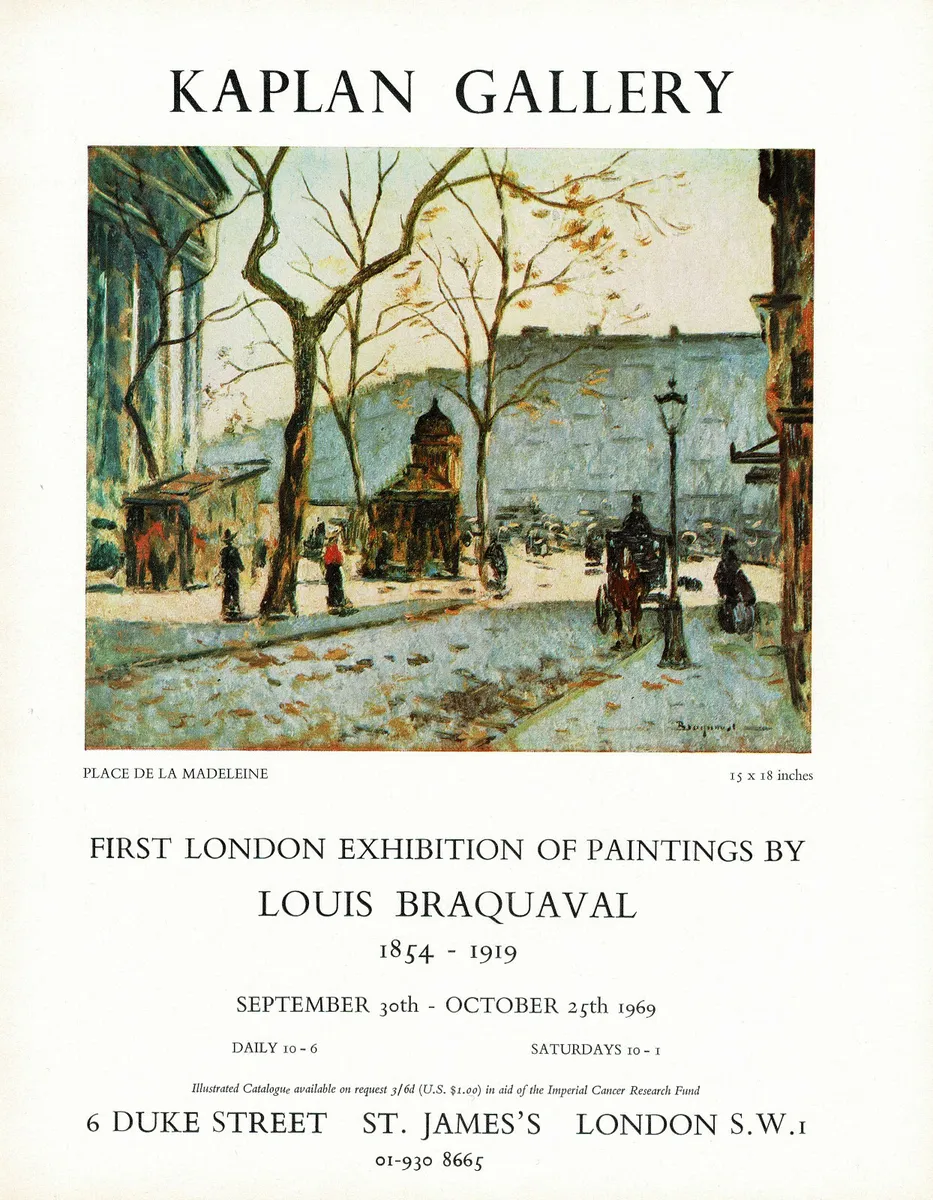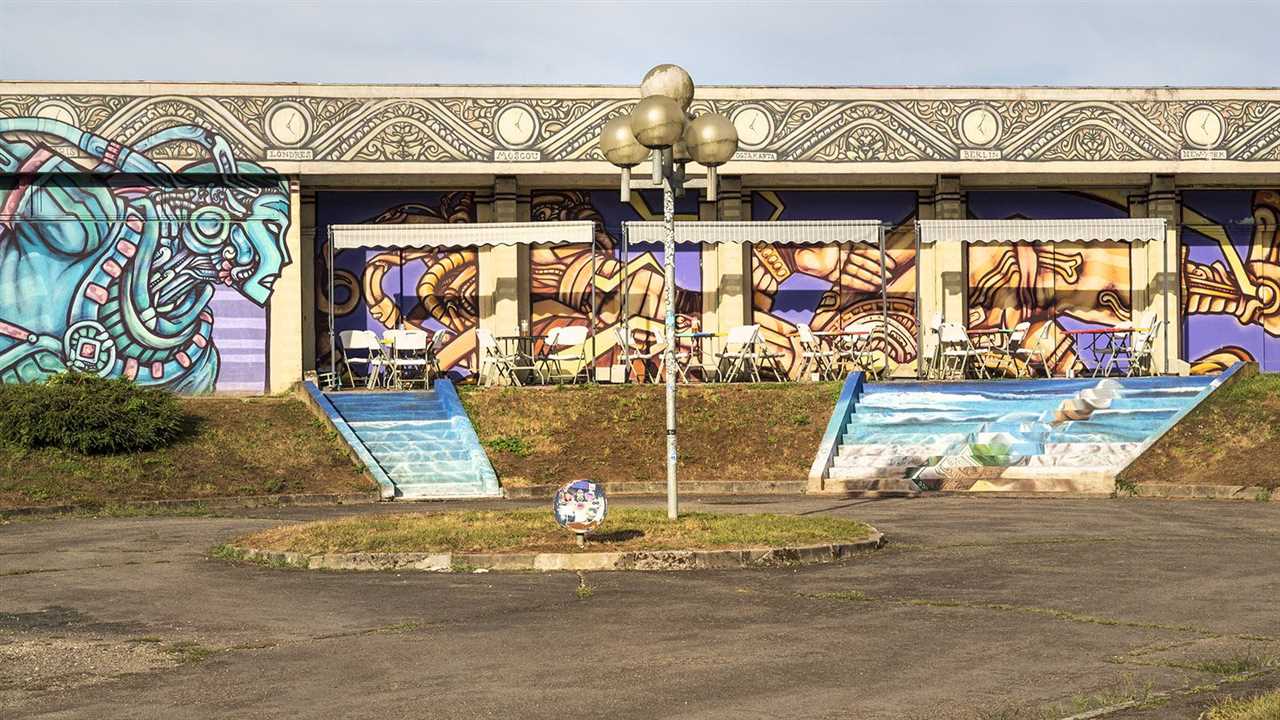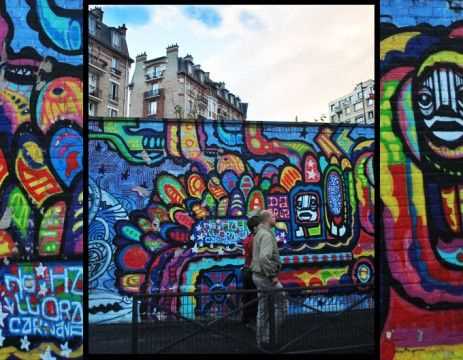
Graffiti has long been considered an integral part of urban culture. This unique form of art, which originated in the streets of New York City in the 1970s, has since spread across the globe, leaving its mark on walls, buildings, and public spaces in cities everywhere. Often misunderstood and unfairly labeled as vandalism, graffiti is, in fact, a powerful expression of creativity and individuality.
At its core, graffiti is a means of communication, a way for artists to share their thoughts, feelings, and opinions with the world around them. Through vibrant colors, intricate designs, and powerful symbols, graffiti artists are able to convey messages that resonate with viewers on a deep level. Whether it’s a political statement, a social critique, or simply a celebration of life and beauty, graffiti has the power to provoke thought and inspire change.
One aspect that sets graffiti apart from other art forms is its connection to the urban environment. Unlike traditional art, which is often displayed in galleries and museums, graffiti is created in public spaces, for the public to see and experience. This inherent accessibility makes graffiti an art form that is by the people, for the people. It brings art out of the elitist confines of high culture and into the streets, where it can be enjoyed and appreciated by everyone.
Graffiti is also a form of rebellion against the homogeneity and sterility of modern cities. In a world where urban spaces are dominated by concrete and steel, graffiti provides a much-needed burst of color and creativity. It is a way for individuals to reclaim public spaces, transforming them from anonymous and soulless places into vibrant and dynamic environments. By challenging the status quo and pushing boundaries, graffiti artists are able to disrupt the monotony of everyday life and inject a sense of excitement and vitality into the urban landscape.
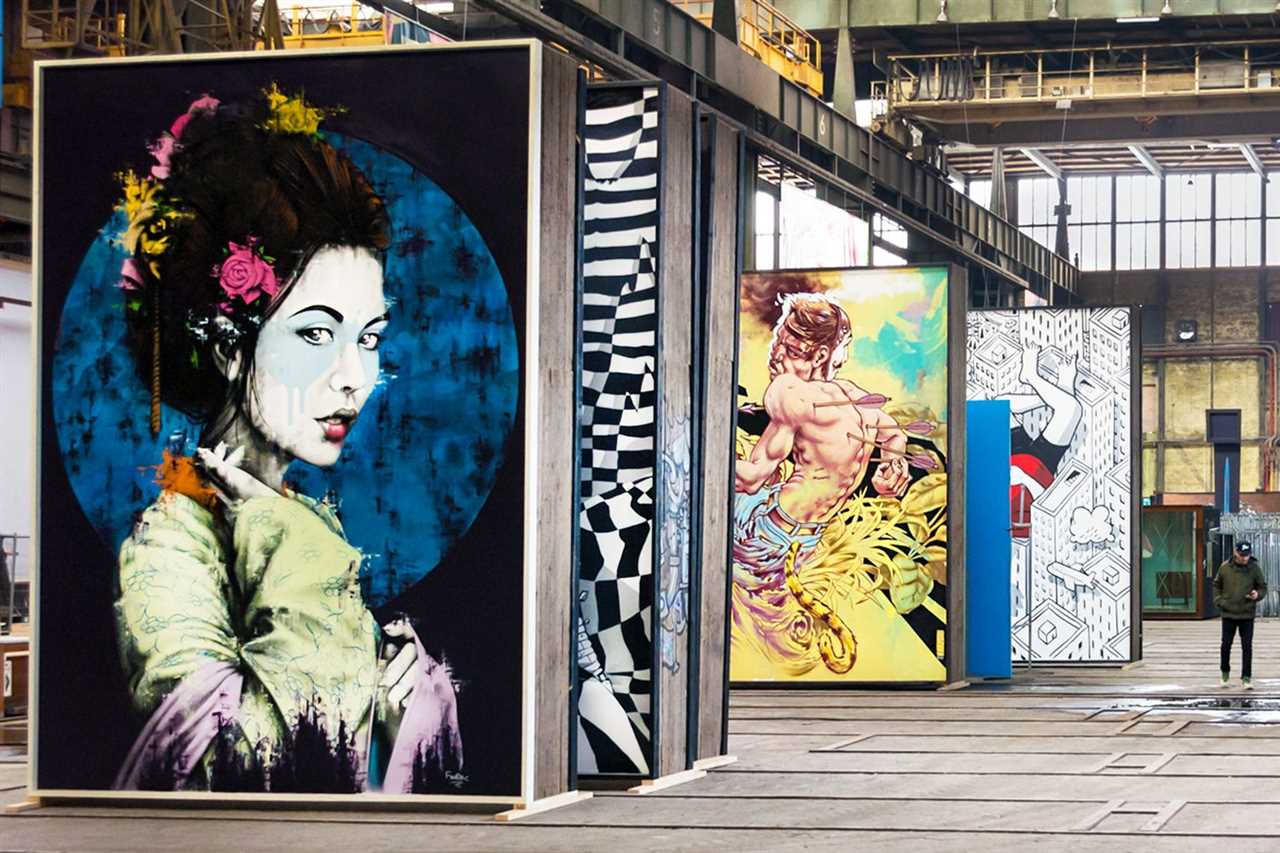
Graffiti has a long history that dates back to ancient times. The word “graffiti” comes from the Italian word “graffio,” which means “scratch.”
Some of the earliest examples of graffiti can be seen in ancient civilizations such as the Roman Empire and ancient Greece. These early forms of graffiti were often political or social in nature, with messages or symbols used to communicate ideas or mark territory.
In more recent history, graffiti has become associated with urban street culture and has gained popularity as a form of self-expression. In the 1970s, graffiti emerged as a prominent art form in cities like New York City, where artists like Keith Haring and Jean-Michel Basquiat used the medium to make political and social statements.
Today, graffiti can be found in cities all over the world, depicting a wide range of styles and themes. It continues to be a controversial art form, with some considering it vandalism and others seeing it as a legitimate form of artistic expression.
Whether it is viewed as art or vandalism, graffiti has undoubtedly left its mark on the urban landscape and continues to be an important part of street culture.
The Evolution of Pop Art
Pop Art is an art movement that emerged in the mid-1950s in the United States and the United Kingdom. Inspired by popular culture and mass media, Pop Art aimed to blur the boundaries between high and low art, challenging traditional notions of what art should be.
Origin and Influences
Pop Art was heavily influenced by the consumerist and materialistic culture of the post-war era. Artists sought to reflect the changing landscape of society, using imagery from advertisements, comic books, and everyday objects. They embraced bright colors and bold visual techniques to create artwork that was visually striking and easily accessible to a wide audience.
One of the key figures in the development of Pop Art was Andy Warhol. His iconic works, such as the Campbell’s Soup Cans and Marilyn Monroe portraits, epitomized the movement’s fascination with popular culture and celebrity. Warhol’s use of screen printing techniques also revolutionized the production of art, allowing for the replication and mass dissemination of his work.
Pop Art Goes Global
Pop Art quickly gained international recognition and spread to other parts of the world. In Europe, artists like Richard Hamilton, Eduardo Paolozzi, and Peter Blake embraced Pop Art’s aesthetic, incorporating elements of collage and assemblage into their work. They also explored themes of consumerism, mass media, and the role of art in contemporary society.
In Japan, the “Superflat” movement emerged in the 1990s and drew inspiration from both traditional Japanese art and Pop Art. Artists like Takashi Murakami created colorful and playful artworks that blended elements of popular culture and fine art. The movement challenged the boundaries between high art and popular culture, much like Pop Art had done decades earlier.
The Evolution Continues
Pop Art continues to have a lasting impact on contemporary art and culture. Its influence can be seen in the works of artists such as Jeff Koons, Damien Hirst, and Banksy. These artists continue to explore themes of consumerism, mass media, and the role of art in society, pushing the boundaries of what is considered “art” in the modern world.
The Language of Graffiti
Graffiti is a form of urban street art that has its own unique language. Through various symbols, letters, and images, graffiti artists communicate messages and express their creativity. This language of graffiti is understood and appreciated by those familiar with the art form.
Symbols and Tags
One of the key elements of the graffiti language is the use of symbols and tags. Tags are stylized signatures or monikers used by graffiti artists to identify themselves. These tags are often created using bold and elaborate lettering styles. Symbols, on the other hand, can range from simple shapes and characters to complex illustrations. The combination of tags and symbols allows artists to leave their mark and establish their presence within a cityscape.
Lettering and Typography
The lettering and typography used in graffiti also play a significant role in conveying messages. Artists take great care in designing their letters, experimenting with different shapes, sizes, and styles. Each artist has their own unique lettering style, which can become their signature. Some artists use 3D effects, shadows, and intricate patterns to make their lettering stand out. Through typography, graffiti artists express their individuality and showcase their skills.
Emotion and Expression
Graffiti is not just about visually appealing artwork; it is also a powerful form of self-expression. Many graffiti artists use their work as a way to express their emotions, opinions, and social commentary. Through their art, they can raise awareness about certain issues or spark conversations. The language of graffiti allows artists to have a voice and make a statement within the urban landscape.
Graffiti as a Form of Self-Expression
Graffiti is more than just vandalism or a blight on city walls. It is a powerful form of self-expression that gives voice to marginalized communities and individuals. Through vibrant colors, intricate designs, and provocative messages, graffiti artists can convey their emotions, ideas, and identities to the world.
A Canvas for Creativity
Graffiti art provides an alternative canvas for artists who may not have access to traditional art spaces or may be excluded from the mainstream art world. It allows them to showcase their creativity and skills without conforming to established norms or galleries. By utilizing public spaces, graffiti artists can engage with a larger audience and challenge societal expectations.
Empowering Marginalized Communities
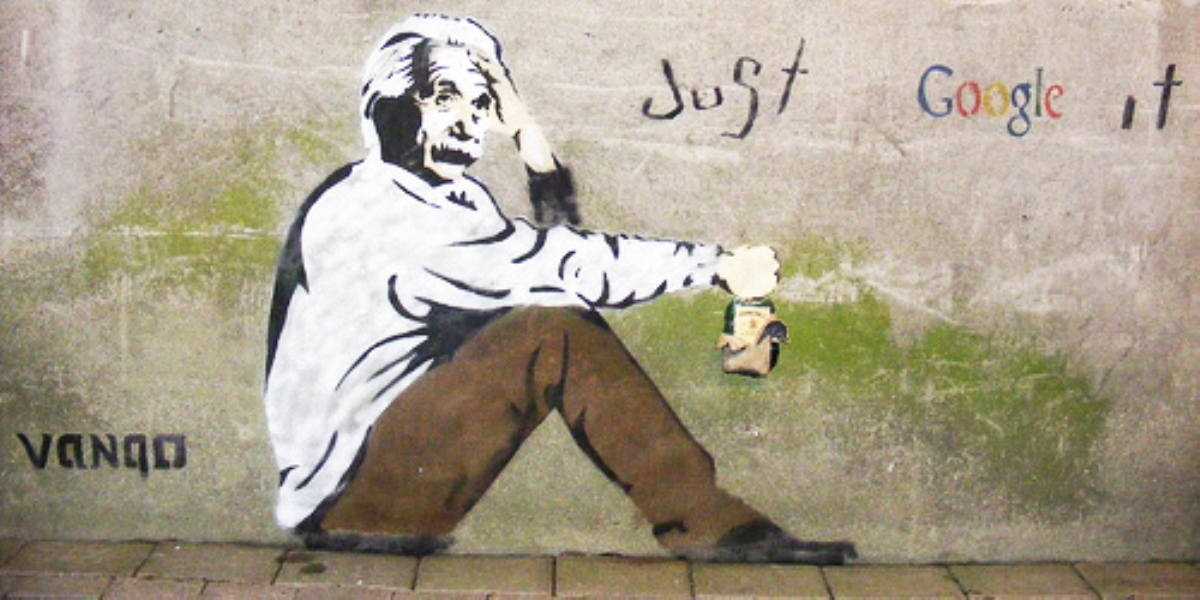
Graffiti has long been used as a means of empowerment for marginalized communities. It gives a voice to those who have been marginalized or silenced by providing a platform for social and political commentary. Graffiti art can express the struggles, frustrations, and aspirations of individuals and communities, offering a powerful outlet for self-representation.
Moreover, graffiti can reflect cultural and ethnic identities, celebrating diversity and challenging stereotypes. It can serve as a visual form of resistance against discrimination and inequality, giving a sense of pride and unity to those who identify with the artwork.
Bridging Gaps and Inspiring Dialogue
Graffiti art has the power to bridge gaps and foster dialogue between different groups of people. It can spark conversations about important social issues, create awareness, and promote understanding. By occupying public spaces, graffiti invites the public to engage with the artwork and the messages it conveys, encouraging discussions and debates about the topics at hand.
Additionally, graffiti can act as a catalyst for change and community development. It can revitalize neglected areas, turning them into vibrant spaces that attract both locals and visitors. Graffiti festivals and mural initiatives not only beautify urban environments but also stimulate economic growth and cultural appreciation.
Graffiti as an Urban Tableau
Graffiti, once considered a form of vandalism, has transformed into a recognized form of urban street art. It has become a way for artists to express their creativity and make a statement about social, political, and cultural issues.
Artistic Expression
Graffiti artists use the walls of urban landscapes as their canvas to showcase their talent and skill. With spray cans and various other tools, they create vibrant and intricate pieces that captivate viewers. Graffiti can range from simple tags to elaborate murals, each a unique representation of the artist’s vision.
Many graffiti artists utilize vibrant colors, bold lines, and intricate designs to convey their message. They often incorporate elements of pop culture, symbolism, and abstract imagery to create visually stunning works of art. This art form has the power to transform drab spaces into captivating and thought-provoking environments.
Social Commentary
Graffiti serves as a form of social commentary, providing a voice to marginalized communities and addressing important issues. Artists use their artwork to shed light on topics such as inequality, racism, and poverty. By placing their art in public spaces, they aim to generate conversations and challenge the status quo.
Through their works, graffiti artists express their concerns, frustrations, and hopes for a better future. Their art can provoke emotions, inspire change, and bring people together to discuss critical societal issues. Graffiti acts as a mirror, reflecting the struggles and triumphs of the urban landscape.
Moreover, graffiti has the power to beautify neglected spaces. It transforms dilapidated walls and empty lots into vibrant and engaging urban tableaus. By bringing color and life to these areas, graffiti artists contribute to the revitalization of communities and create a more aesthetically pleasing environment.
Legal Challenges
Despite its cultural significance, graffiti remains a controversial art form. Many cities and governments view it as vandalism and have implemented strict laws and regulations to discourage its creation. Artists often have to navigate a fine line between artistic expression and illegal activity.
However, there is a growing recognition of graffiti as a legitimate art form, and some cities have embraced it by providing legal spaces for artists to create their work. Initiatives such as street art festivals and curated mural projects have emerged, allowing graffiti artists to showcase their talent in a sanctioned and supported manner.
Graffiti as an urban tableau is a powerful artistic expression that transforms the walls of cities into visually captivating and thought-provoking landscapes. It serves as a platform for social commentary, expressing the voices of marginalized communities. While it faces legal challenges, the recognition of graffiti as a legitimate art form continues to grow, contributing to the vibrancy and cultural richness of urban spaces.
The Impact of Graffiti on Urban Culture
Graffiti is a form of art that has had a significant impact on urban culture. It has transformed the streets of cities worldwide, adding vibrancy and character to once dull and monotonous landscapes.
One of the main impacts of graffiti on urban culture is its ability to provide a voice for marginalized communities. Graffiti allows individuals to express their thoughts, opinions, and experiences in a public space, making their voices heard and sparking conversations about important social issues.
Artistic Expression and Creativity
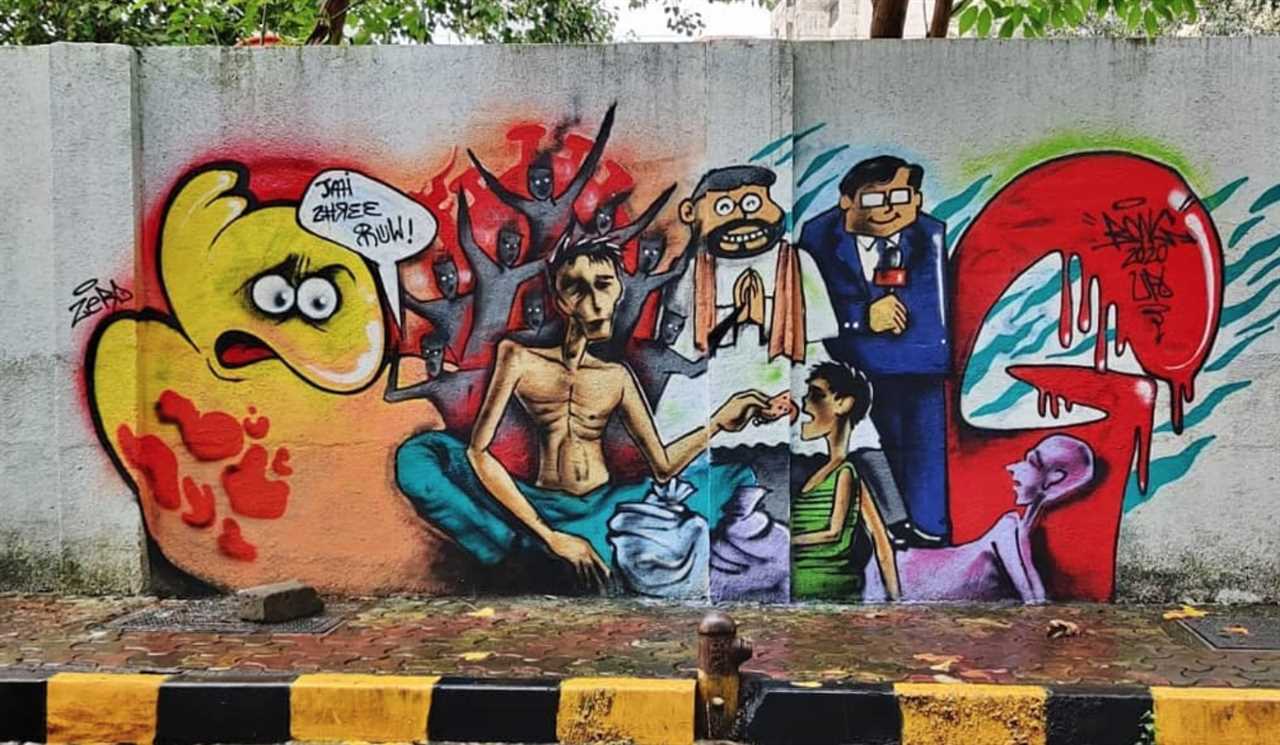
Graffiti is a powerful form of artistic expression that enables artists to showcase their creativity and skills. It often challenges traditional notions of art by using unconventional materials and techniques. This unique form of expression fosters a sense of creativity among artists and inspires others to think outside the box when it comes to art.
Moreover, graffiti has the power to transform mundane spaces into visually stunning works of art. By adding colors, patterns, and intricate designs to surfaces, graffiti artists can create an immersive and captivating experience for passersby, turning urban environments into open-air galleries.
Community Engagement and Identity
Graffiti also plays a crucial role in fostering a sense of community and identity in urban areas. It creates a shared cultural experience and helps to define a neighborhood’s character. In many cities, neighborhoods with vibrant graffiti scenes are often seen as more desirable and lively, attracting visitors and fostering a stronger sense of community among residents.
Graffiti has the power to bring people together, both in creating and appreciating the art form. It encourages individuals from diverse backgrounds to engage with one another, fostering social connections and breaking down barriers.
The Controversies Surrounding Graffiti
Graffiti has long been a source of controversy, with both supporters and opponents passionately arguing their views. Here, we will explore some of the main controversies that surround this form of urban street art.
Legal Issues
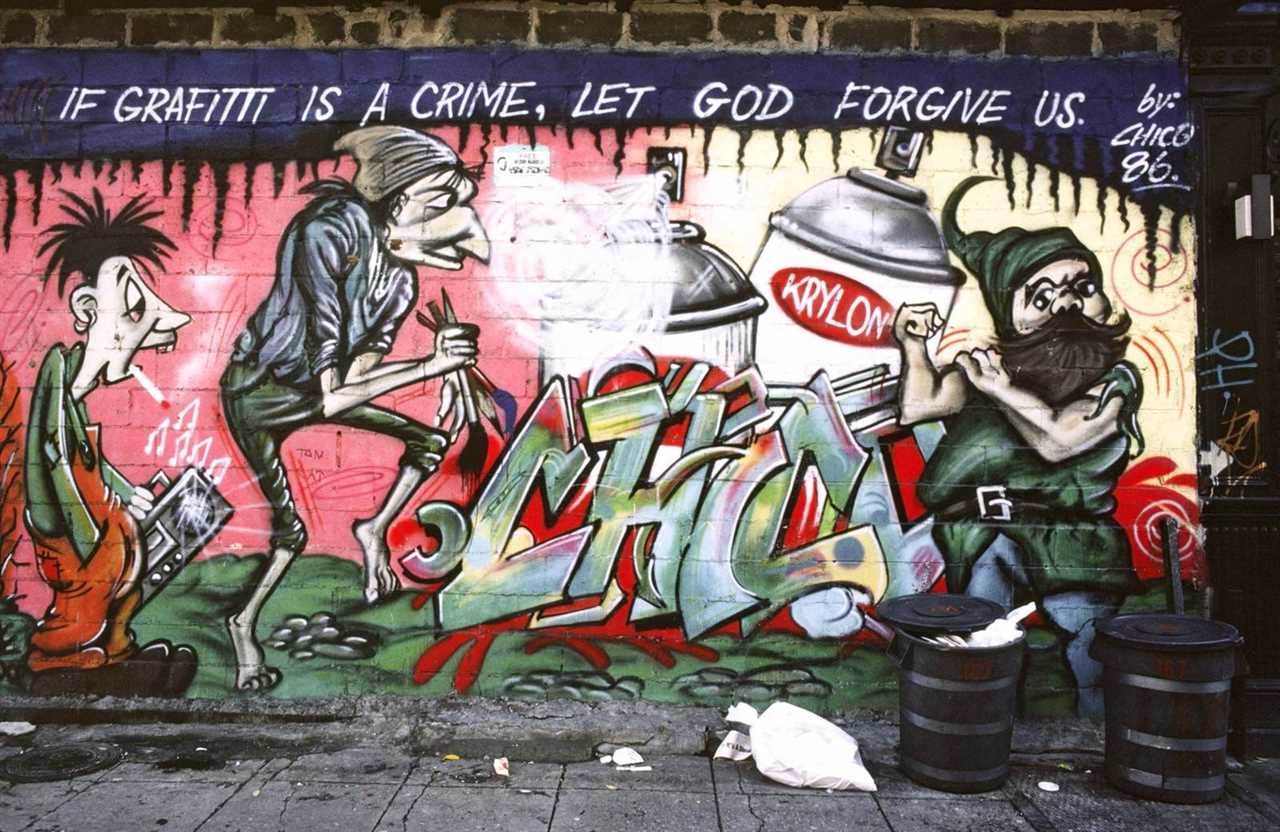
One of the main controversies surrounding graffiti is its legality. In many places, graffiti is considered illegal vandalism, punishable by fines and even imprisonment. Opponents argue that it defaces public and private property and contributes to a sense of urban decay.
On the other hand, supporters argue that graffiti can be a legitimate form of artistic expression and should be protected. They argue that graffiti can bring vibrancy and creativity to neglected areas and serve as a means of social commentary.
Property Rights
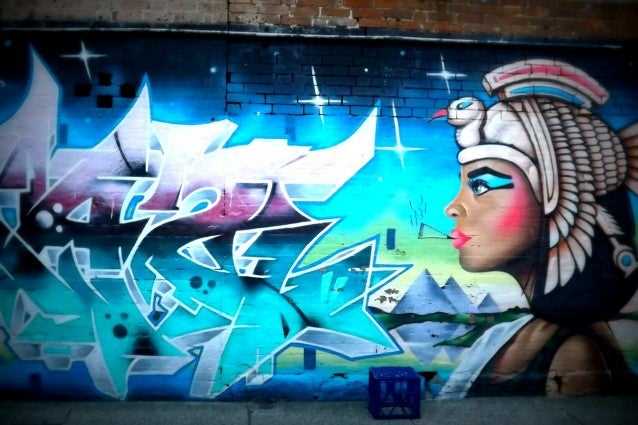
Another controversy surrounding graffiti revolves around property rights. Critics argue that graffiti artists infringe upon the rights of property owners by using their buildings or walls as canvases without permission. They see this as a violation of personal property rights and argue for stricter punishments for graffiti artists.
Supporters, however, believe that public spaces should be open for artistic expression. They argue that graffiti can transform otherwise dull and uninspiring spaces into vibrant cultural landmarks. They advocate for designated areas where artists can create legally and without fear of punishment.
Aesthetic Value
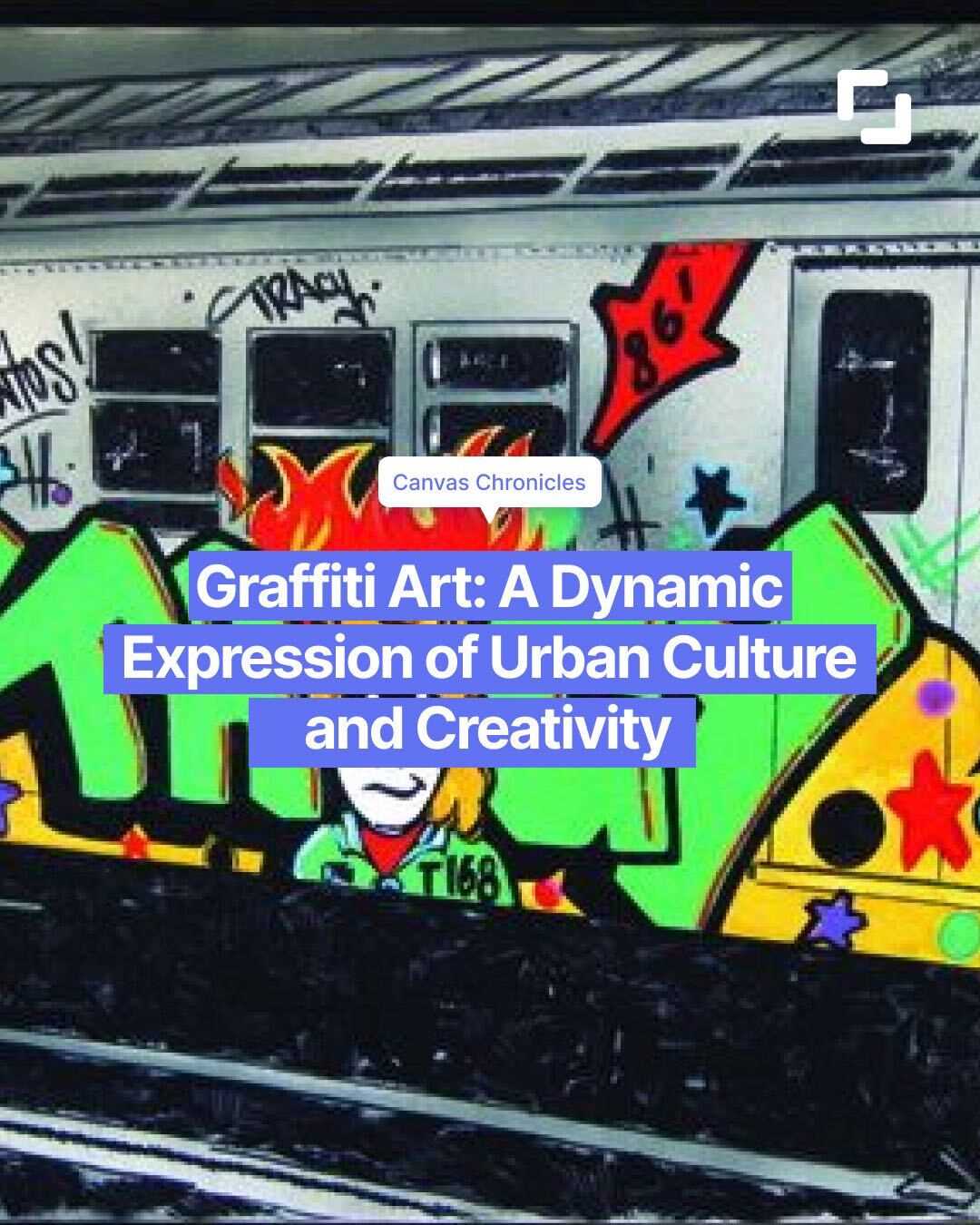
Graffiti’s aesthetic value is also a point of contention. Some argue that graffiti is nothing more than vandalism and lacks artistic merit. They criticize its perceived lack of skill and technique. They also believe that graffiti can detract from the beauty of a cityscape.
Supporters, however, argue that graffiti can be highly creative and visually stunning. They see it as a unique form of art that challenges traditional notions of beauty and engages with the surrounding environment in a way that traditional art cannot.
Social Impact
The social impact of graffiti is another controversial aspect. Opponents argue that graffiti is often associated with criminal activity, gang culture, and urban decay. They believe that graffiti contributes to a sense of fear and can deter economic development.
Supporters, on the other hand, argue that graffiti can have a positive social impact. They see it as a form of self-expression that gives a voice to marginalized communities. Graffiti can also serve as a platform for social and political messages, raising awareness and sparking important conversations.
Graffiti and Tourism
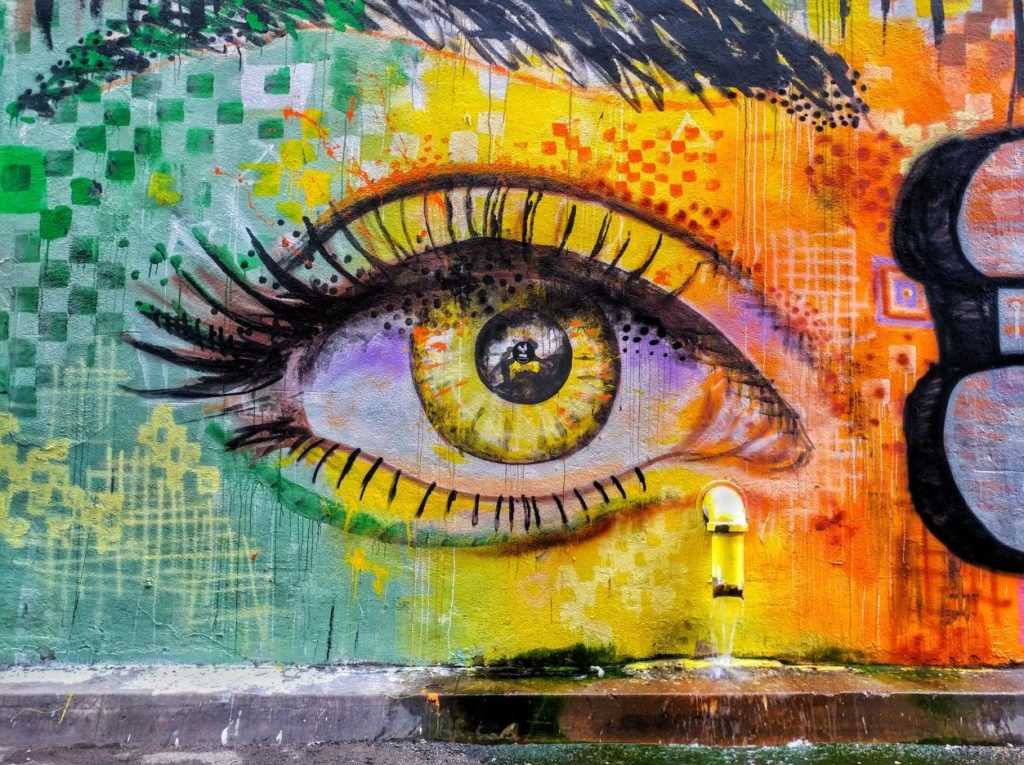
Graffiti has become increasingly popular as an attraction for tourists in urban areas around the world. It has transformed from being considered as vandalism to being recognized as a form of street art that adds vibrancy and character to city landscapes.
Tourists are drawn to graffiti as it gives them a unique insight into the local culture and the issues faced by the community. It provides an authentic and raw perspective that traditional tourist attractions often lack. Exploring graffiti-covered neighborhoods allows tourists to experience the true essence of the city and its people.
Graffiti Tours
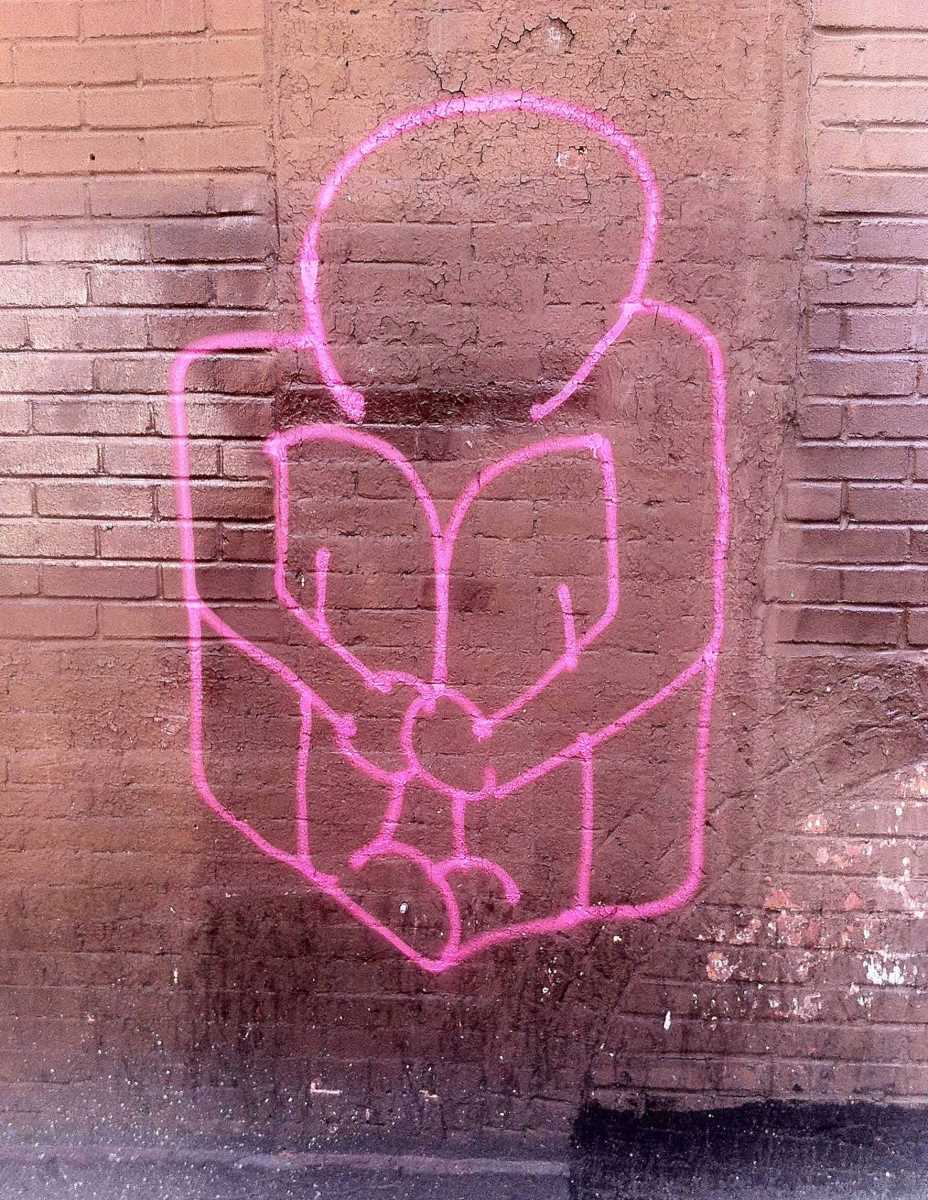
Many cities now offer guided graffiti tours where visitors can explore the street art scene with local artists or experienced guides. These tours take visitors on a journey through vibrant neighborhoods, showcasing the work of renowned graffiti artists and providing historical and cultural context to the art. It allows tourists to learn about the different techniques used, the stories behind the murals, and the impact of graffiti on the local community.
Graffiti tours not only educate tourists about the art form but also support local artists financially. Many tours collaborate with artists, providing them with a platform to showcase their work and earn a living from their talent. This symbiotic relationship between the tourism industry and the graffiti scene helps foster creativity and encourages the growth of street art as a legitimate form of artistic expression.
Controversies and Challenges
While graffiti tourism can bring economic and cultural benefits to a city, it also faces several controversies and challenges. Some argue that promoting graffiti as a tourist attraction encourages vandalism and illegal activities. Additionally, there is also a concern that gentrification and commercialization of graffiti can lead to the loss of authenticity and the displacement of local artists.
Local authorities and communities must find a balance between promoting graffiti tourism and preserving the integrity of the art form and the neighborhoods it is created in. Regulations and guidelines need to be put in place to ensure that graffiti remains respectful, engaging, and does not negatively impact the local community.
| Pros | Cons |
|---|---|
| Increased tourism revenue | Potential vandalism and illegal activities |
| Support for local artists | Gentrification and loss of authenticity |
| Cultural exchange and understanding | Negative impact on local communities |
Graffiti as an Outlet for Creative Expression
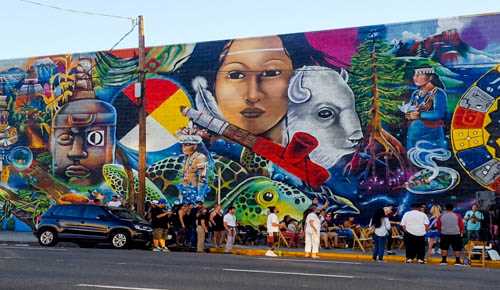
Graffiti is often seen as a form of vandalism, with property owners and authorities working to remove it from public spaces. However, graffiti can also be seen as a powerful outlet for creative expression, providing artists with a way to communicate their thoughts, feelings, and ideas to the world.
Many graffiti artists use city walls and other public spaces as their canvas, transforming ordinary buildings and structures into vibrant works of art. They use a variety of techniques and materials, including spray paint, stencils, and stickers, to create their unique pieces. Graffiti artists often develop their own distinct style and aesthetic, showcasing their individuality and creativity.
Through graffiti, artists can address important social and political issues, raising awareness and sparking conversations. They can make powerful statements about injustice, inequality, and the state of the world, using their art to challenge the status quo and speak up for marginalized communities. Graffiti can also be a form of protest, allowing artists to voice their dissent and critique the powers that be.
For many artists, graffiti provides a sense of freedom and empowerment. It allows them to reclaim public spaces and have their voices heard, even in the face of censorship and repression. Graffiti can offer an escape from the constraints of traditional art forms and galleries, providing an alternative platform for artistic expression.
Furthermore, graffiti can inspire and influence other artists and the general public. It can challenge preconceived notions of what art should be, encouraging individuals to think outside the box and embrace creativity in unconventional ways. Graffiti can also foster a sense of community, bringing people together through shared experiences and appreciation for urban street art.
| Graffiti as an Outlet for Creative Expression: |
| – Provides a way for artists to communicate thoughts, feelings, and ideas |
| – Transforms ordinary buildings and structures into vibrant works of art |
| – Addresses social and political issues, raising awareness and sparking conversations |
| – Provides a sense of freedom and empowerment for artists |
| – Inspires and influences other artists and the general public |
The Future of Graffiti
1. Technological Integrations
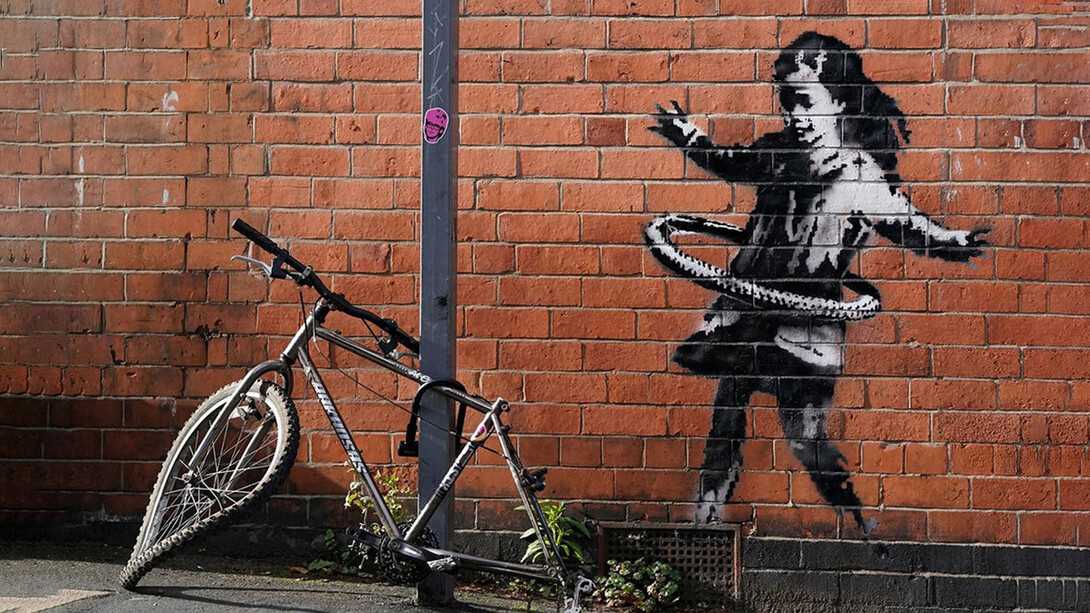
In the future, graffiti is likely to continue embracing technology and becoming more integrated with digital platforms. Artists may explore augmented reality, using mobile apps to overlay their artwork onto physical spaces, creating an immersive experience for viewers. Additionally, advancements in projection mapping technology could allow graffiti artists to manipulate urban landscapes in real-time, transforming entire cityscapes with their creations.
2. Focus on Sustainability
As environmental concerns grow, graffiti artists are also beginning to focus on sustainability in their work. More artists are using eco-friendly materials and techniques, such as biodegradable paints and stencils made from recycled materials. There is increased emphasis on creating sustainable murals that not only inspire but also contribute positively to the communities they are a part of.

I am a mural enthusiast and a fervent admirer of street art. Rather than creating murals myself, I am passionate about collecting them. My love for street art knows no bounds. I am dedicated to curating and cherishing these artworks that grace the streets. My collection stands as a testament to my profound appreciation for this form of artistic expression.
read about me


